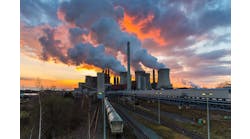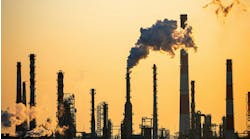Greenhouse Gases: See The Forest Not Just The Trees
Reducing emissions of carbon dioxide is an imperative for many companies in the chemical industry. Of course, ongoing — but hopefully much lower — emissions of CO2 are inevitable. So, chemical makers also are focusing considerable efforts on better ways to capture, store and utilize CO2. Fortunately, much progress is occurring in all these areas, as CP has detailed in recent cover stories “Collaboration Promises a Winning Hand,” and “Net Zero Efforts Add Up,” and in ongoing news items such as “Surface Layer Improves CO2 Capture." Nevertheless, despite such efforts, CO2 emissions will remain a significant problem for a long time.
Nature always has played a crucial role in dealing with CO2 in the atmosphere. Most notably, forests serve as a critical resource for converting CO2 into oxygen by photosynthesis. Unfortunately, demand for certain commodities has spurred substantial loss of forest acreage.
Thus, preventing further deforestation is gaining growing attention.
Here, the chemical industry largely must sit on the sidelines, with companies in other sectors necessarily taking the lead roles in initiatives to save forests.
A report “From Commitments to Action at Scale — Critical steps to achieve deforestation-free supply chains” puts the efforts of such companies into perspective. It was issued in late May jointly by the Accountability Framework, a coalition of groups including the Rainforest Alliance, and CDP, www.cdp.net, an organization that operates a disclosure system for firms to report carbon emissions, water use and deforestation. (For details on a recent water report from CDP, see: “Report Dives into Water Security.")
In the report’s preface, Jeff Milder of the Rainforest Alliance and Thomas Maddox of CDP caution: “Without the right systems in place to address deforestation — including effective traceability, supplier engagement, monitoring, verification, and landscape-level collaboration — companies will be unable to address GHG [greenhouse gas] emissions and other environmental impacts in their supply chains.” They continue: “How much progress has been made? Unfortunately, it would be generous to say that the glass is half-full.”
The report uses data from disclosures to CDP’s 2021 forests questionnaire — in particular, the responses of 675 companies that produce or source one of the seven commodities responsible for the bulk of commodity-driven forest loss: palm oil, timber products, cattle products, soy, natural rubber, cocoa and coffee.
Among the key findings are:
• Only 36% of these firms have public company-wide no-deforestation or no-conversion policies. A mere 13% have no-deforestation/no-conversion commitments that align with good practice.
• Just 26% of the companies report monitoring systems in place to assess compliance with rigorous no-deforestation/no-conversion policies or commitments.
• Timebound quantifiable targets related to supply-chain control systems largely are lacking. Only 23% of the companies report third-party certification targets, and just 14% say they have a traceability target related to their commitments.
• Traceability efforts generally have significant gaps. Only 23% of firms can trace more than 90% of the volumes they produce or source, while 38% have no information about the origins for at least half of their commodity volumes.
The chemical industry certainly must step up its efforts to deal with CO2, but so too must companies responsible for deforestation.



